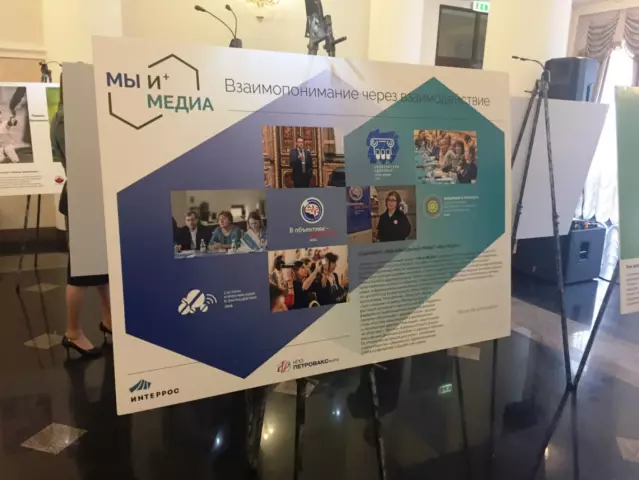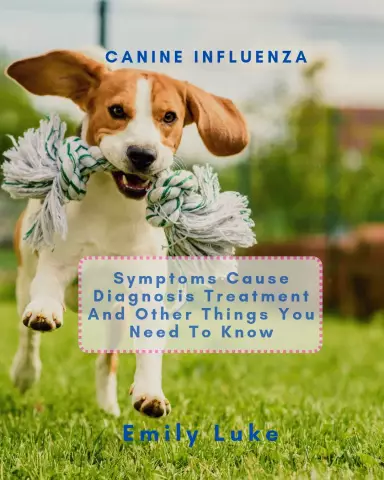- Author Rachel Wainwright [email protected].
- Public 2023-12-15 07:39.
- Last modified 2025-11-02 20:14.
Subunit adjuvant vaccines for the prevention of influenza
To date, vaccination is the only reliable way to prevent influenza 1. It is especially necessary for the elderly, children, those suffering from chronic diseases and those who work in the service sector and in their profession are in contact with a large number of people, for example, medical workers and educators.
Influenza vaccine prophylaxis can be carried out with various vaccines. Some of them contain a live, but weakened virus (live vaccines), other immunobiological preparations contain viral particles inactivated by ultraviolet rays or chemicals (whole virion vaccines). Subunit adjuvant vaccines are currently the most effective and safest. These include immunobiological drugs of a domestic manufacturer: Grippol, Grippol plus and the innovative tetravalent vaccine Grippol Quadrivalent.

Types of influenza vaccines
The first generation of influenza vaccines are live vaccines containing not inactivated, but live, only weakened virus. Such vaccines are effective, but they have a number of limitations: they are not recommended for children under 3 years of age, people with immune deficiencies, pregnant women, people with chronic diseases, people who are in contact with patients by profession, i.e. precisely those who are at risk of influenza.
The second generation of immunobiological preparations, split vaccines, contain a split virus - fragments of the envelope and internal proteins. Such vaccines have good immunogenicity and, in comparison with live vaccines, are safer, however, they can cause severe side reactions, especially local ones (itching, pain, swelling at the injection site).
The third generation of influenza vaccines are subunit vaccines based on purified surface antigens of influenza viruses - neuraminidase and hemagglutinin. To enhance the immune response, some vaccines have been supplemented with adjuvants. Typical representatives of subunit adjuvant vaccines are domestic immunobiological drugs: Grippol, Grippol plus and Grippol Quadrivalent. Let's consider the effectiveness of subunit adjuvant vaccines using these drugs as an example.
Grippol plus and Grippol Quadrivalent
Grippol plus is a trivalent vaccine containing antigens of two influenza A viruses and one influenza B. It is produced in the form of a suspension for intramuscular and subcutaneous administration. It has been on the market for over 10 years and during this time more than 135 million people have been vaccinated with it.
Grippol plus is used to prevent influenza in children from 6 months of age, as well as in adults - without age restrictions. First of all, vaccination is indicated:
- children;
- pregnant women;
- persons suffering from chronic diseases of internal organs;
- people over 60 years old;
- those who work with people: medical workers, public transport workers, educational institutions, as well as the military and the police.
Grippol Quadrivalent is the first subunit adjuvant vaccine in Russia with protection against four influenza viruses: two strains of A viruses (H1N1 and H3N2) and two strains of influenza B viruses (Victoria and Yamagata). It is especially indicated for people who are at high risk of contracting the flu. Currently, the vaccine is approved for immunization of adults - from 18 to 60 years old, after the completion of a clinical study in children, the vaccine can be used to vaccinate children from 6 years old.
Clinical trials of Grippol vaccines were carried out in accordance with the international Good Clinical Practice 2.3 standards. The efficacy and safety of using Azoximer bromide as an adjuvant has been confirmed by a report from an independent European company 4.
Vaccines are manufactured in accordance with global GMP standards. They contain no preservatives, toxic substances or antibacterial agents, so the risk of hypersensitivity reactions tends to zero 2.
Vaccine adjuvant Grippol
Viral antigens, which are part of both vaccines, are associated with a high molecular weight polymer - Azoximer bromide. This is the active ingredient of the drug Polyoxidonium, but in the vaccine it is contained in a concentration 24 times less than in the drug Polyoxidonium. Due to its low concentration and taking into account the local administration of the vaccine, it does not work as an immunomodulator, but in combination with antigens, it stimulates the natural immune response to antigens. Therefore, Grippol plus can be prescribed to pregnant women, immunosuppressed people, and people with cancer and does not affect systemic immune mechanisms.
Vaccines containing adjuvants based on aluminum, or hydroxide, or phosphate have been used for a long time both in Russia and in the world. It was thanks to adjuvants that it was possible to create such a number of vaccines against actual infections - most of the vaccines in the National Vaccination Calendar, not only Russian, but also foreign ones.
There are also influenza adjuvant vaccines containing the squalene-based MF59 water-emulsion adjuvant. This adjuvant vaccine was specially created in Europe for the elderly, whose immunity is no longer responding well to vaccination.
Antigenic load of Grippol vaccines
The use of an adjuvant in the Grippol® plus vaccine allows three times to reduce the dose of viral antigens: 5 mcg instead of 15 mcg, which means that the vaccine is safer. This unique production technology has been used for more than 20 years for the production of Grippol and Grippol plus vaccines, which are widely used in mass immunization of the population. Clinical studies of these vaccines have convincingly proved that such a dosage of antigens in combination with the adjuvant Polyoxidonium is quite enough to effectively provide a high immune response 2,3,4.
The composition and quality of vaccines are regulated by the European or National Pharmacopoeia. The European Pharmacopoeia states 7 that the antigen content should be 15 mg, unless a different dosage is justified by the results of clinical studies. Theoretically, it would be possible to bring the content of antigens in the vaccine to 15 μg, but this will not lead to an increase in effectiveness, while it may lead to an increase in the frequency of local reactions. Consequently, Grippol vaccines have an increased patient safety profile due to a decrease in the antigenic load on the body, which was confirmed by the results of a comparative study of the Grippol plus vaccine and vaccines containing 15 μg antigens 8.
conclusions
Thus, Grippol vaccines have comparable efficacy compared to vaccines containing 15 mcg for each influenza virus strain, and comply with all international recommendations. By reducing the antigenic load on the body, these immunobiological preparations have the highest safety profile, which has been proven by clinical trials with a large number of participants, conducted in accordance with all international and Russian quality standards.
It is important that Polyoxidonium in Grippol vaccines does not work as an immunomodulator, but only as an adjuvant, without affecting the systemic immune mechanisms.
Literature
- World Health Organization. - 2005. - No. 33. - R. 277-288.
- Voitsekhovskaya E. M., Vakin V. S., Vasilyeva A. A. and others. Results of the analysis of the immunogenicity of the new influenza vaccine Grippol® plus Epidemiology and vaccine prophylaxis. - 2009. - No. 1 (44). - S. 40-45.
- Kharit S. M., Nacharova E. P., Chernyaeva T. V. Safety of inactivated polymer-subunit trivalent influenza vaccine. Post-registration observation Questions of modern pediatrics. - 2009. - No. 4. - S. 30-34.
- R. Compier. Safety and efficacy of a subunit influenza vaccine containing Polyoxidonium. Systematic review and meta-analysis of clinical trials. Epidemiology and Vaccine Prophylaxis No. 17 (4) / 2018, pp. 25-30.
- Chebykina A. V., Kostinov M. P., Magarshak O. O. Evaluation of the safety and efficacy of influenza vaccination Epidemiology and vaccination. - 2010. - No. 4.
- Erofeeva M. K., Nikonorov I. Yu., Maksakova V. L., Elshina G. A. and others. Evaluation of the effectiveness of influenza vaccine Grippol® plus in school-age children during the 2008-2009 influenza epidemic. Epidemiology and vaccine prevention. - 2010. - No. 3.
- A. V. Nekrasov, N. G. Puchkova Improvement strategies and methods for evaluating influenza vaccines. Grippol® plus is a modern protection against breast cancer flu. - 2008. - No. 22. - T. 16.
- Comparative assessment of reactogenicity and immunogenicity of commercial influenza inactivated vaccines: polymer-subunit Grippol plus, subunit Influvac, split vaccine Vaxigrip "S. M. Kharit, D. A. Lioznov, A. A. Rulyova / Epidemiology and Vaccine prophylaxis No. 2 (93) / 2017.
- European Pharmacopoeia, 2006 (Ph. Eur 2006).
Found a mistake in the text? Select it and press Ctrl + Enter.






